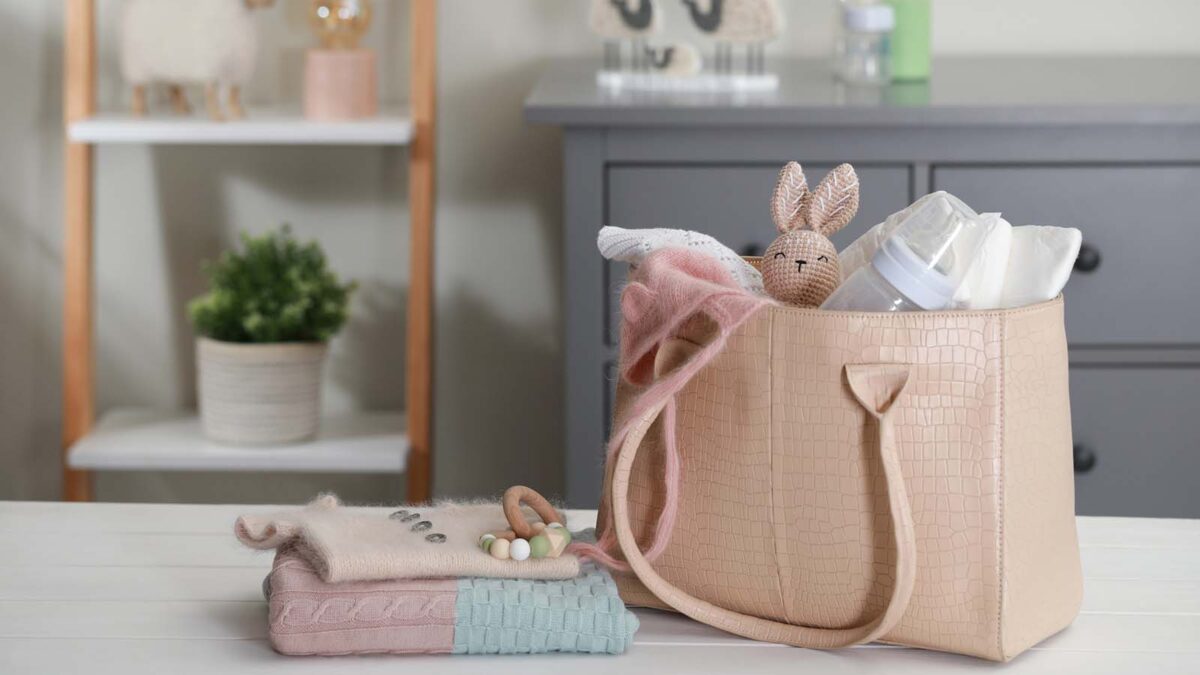
Detox Your Diaper Bag & Top Chemicals to Avoid in Baby Products
When I became a new mama there were so many opinions on what one should and shouldn’t do. As I found my footing in the whirlwind of opinions I slowly began to chip away at the “fashionable” dos & don’ts and dug into the health aspects of what was good for mama & baby to be using every single day! As I began researching I learned that just because something was common and accepted didn’t mean it was healthy and safe. I was SHOCKED to learn that there was no oversight on the health and safety of products that became available on store shelves in the consumer market! Less than 10% of chemicals being used in personal care products today have ever been tested for human health and safety and more than 80,000 chemicals have been introduced into the market since WWII. While using fewer products overall is a great approach, for some of us, we still need effective products and may not have the time to make our own or go without anything. Raising babies in the very dry, high desert, climate of Colorado meant that I needed to find effective moisturizers that weren’t going to disrupt my little one’s moisture barrier or their hormonal system. I also needed a guide of ingredients to watch out for and avoid, so I created this short list of ingredients that are most commonly found in baby care products. This isn’t an exhaustive list, but hopefully, by being equipped with a few of the worst offenders, you too can navigate the marketplace a little more effectively.
INGREDIENTS TO WATCH FOR:
- Propylene Glycol (PEG and PPG): Commonly found in many commercial baby wipes, as well as in your windshield wiper fluid!
- Triclosan: Sometimes found in pacifiers or any other “antibacterial” product. Officially banned in the US in 2016 in hand soaps, it’s still prevalent in many products.
- Petroleum/Petrolatum/Mineral Oils/Parrafins(Petrochemicals): Often found in diaper barrier creams and other skin soothers and moisturizers. Known to be a hormone disruptor, carcinogen, skin irritant (with extended use) and allergen. Other names for this ingredient: Benzene, Toluene, PEG, DEA, MEA, Butanol, EDTA, Methanol, Propyl-containing words.
- Formaldehyde: Was previously found in mass-market baby shampoo, it was removed from most several years ago. That said, ingredients that produce formaldehyde are still common. Other names for this ingredient: methylene glycol, such as formalin, methanal, methanediol, or formaldehyde monohydrate.
- Talc: A frequently found ingredient in some baby powders. The biggest concern is that talc is commonly contaminated with asbestos. Other names for this ingredient: talcum, cosmetic talc, magnesium silicate.
- Fragrance (generally made of coal and petroleum-derived synthetic chemicals): Often found in disposable diapers, baby powder, baby wash and shampoo, and lotions. Considered a trade secret, so companies do not need to disclose what chemical cocktail their fragrance contains. A recent study by the EWG found that more than 75% of all fragranced products contained phthalates. Phthalates are linked to hormone disruption, cancer, skin allergens, and irritation. Other names for this ingredient: parfum, perfume, scent, musk, and essence.
This list is by no means comprehensive but just represents a few of the more common “DO NOT USE” that are NOT currently banned in baby and other personal care products in the United States.
What you CAN do instead!
- Empower yourself by READING LABELS & Download the Environmental Working Group’s FREE App called “Healthy Living” for an easy tool on the go.
- Wash hands & toys with warm soapy water or non-toxic essential oil-based sprays instead of chemical-laden or anti-bacterial formulas that disrupt hormones and make things wacky. My favorite non-toxic all-purpose spray is Humble Suds. My favorite bath soaps are from Everyone Brand or Alaffia. For wee ones, Earth Mama, Angel Baby has a really nice Simply Non-Scents Baby Wash.
- Skin hydration use plant-based formulas, instead of petroleum-based ones, increase hydration, nutrition-dense foods, high-quality fats, and check for allergies when severe dry skin persists. My favorites are the Balm for All from Beautycounter & Earth Mama, Angel Baby Calendula Baby Oil.
- Still love a good baby powder? There are great ones out there that are talc-free and contain arrowroot, earth’s clays, cornstarch, or rice powder. My favorite is Primally Pure’s Talc Free Baby Powder.
- Love things to smell good? Avoid the word “Fragrance” in products. Fragrance really means “undisclosed chemicals”. Don’t be fooled by the word “unscented” – this product could still have fragrance. Go for companies that use 100% plant-based essential oils to make their products effective and health-protective, while still smelling great! You may also be surprised at how quickly your nose adjusts to little or no fragrance in products and you may find you don’t even miss the stronger, harsher fragrance cocktails and begin to prefer the gentler, plant-based essences.
Need more personalized support and guidance?

![In our summer era☀️
What’s your favorite slow summer activity?
[mom influencer, deliberate mom, viral reel, clean living, intentional summertime, explore page, for you page, real motherhood, boy mom, girl mom, life with kids, parenthood, mom life, motherhood]](https://cleanbecky.com/wp-content/uploads/2024/05/508385984_18515454589042139_760553952526085181_n-320x320.webp)




